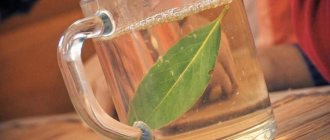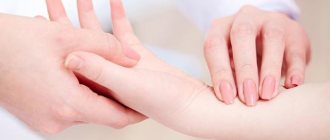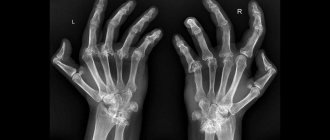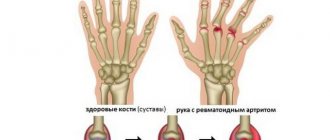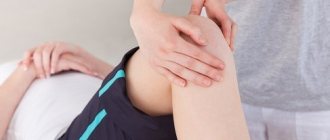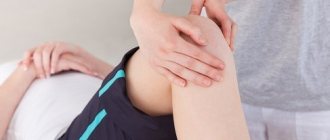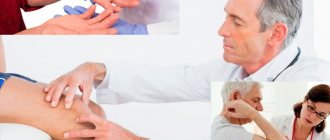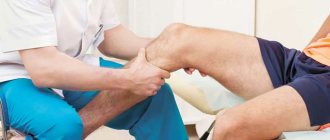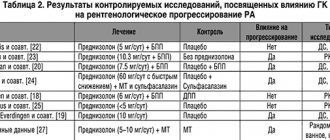Juvenile arthritis in children (JRA) is a general name for a group of joint diseases in patients under the age of 16 years. Often this term refers to childhood rheumatoid arthritis, the main cause of disability in children and adolescents with musculoskeletal disorders.
In Russia, juvenile arthritis in children is quite common. According to statistics, every thousand child is affected by it. The disease does not spare even infants. Children's juvenile arthritis is more common among girls (about 2 times).
After the first episode, the disease progresses rapidly, so early diagnosis in juvenile arthritis is critical.
Description of the disease
Arthritis is accompanied by pain in the affected parts of the body and is dangerous due to its complications.
In some cases, the disease leads to the development of joint deformities or the formation of contractures. In the future, this may reduce the patient’s ability to work and cause disability. According to statistics, 1 child in 1000 suffers from arthritis. Boys experience joint damage 2-3 times less often than girls. Pathology can occur in children from 0 to 18 years of age. However, patients under the age of 5-6 years are most often affected.
Regardless of their origin, arthritis is capable of triggering autoimmune processes in the body, which are characterized by a systemic nature. The pathogenetic links of the disease, in addition to the joints, begin to affect the skin, muscles and internal organs.
Types of arthritis in children:
- Juvenile rheumatoid arthritis (JRA). An autoimmune disease that often causes joint deformation and subsequent disability in adulthood.
- Rheumatoid arthritis. The disease is a consequence of the negative effects of streptococci. In addition to the joints, the cardiovascular system is often involved in the pathological process.
- Juvenile ankylosing spondylitis. A rarer form of arthritis, accompanied by damage to the spine with the gradual development of its deformation.
- Reactive arthritis. A group of pathologies that are characterized by damage to the joints against the background of the activity of bacteria and viruses that multiply primarily in the gastrointestinal tract or urinary system of the patient.
The disease can be acute or chronic. The task of parents and doctors is to timely identify pathology and prevent its transition to a latent state. this approach reduces the risk of complications.
Juvenile rheumatoid arthritis
What is juvenile rheumatoid arthritis?
Juvenile rheumatoid arthritis (JRA) is a chronic inflammatory disease of the joints of unknown cause, lasting more than 6 weeks, developing in children under the age of 16 years.
How common is juvenile rheumatoid arthritis?
Juvenile rheumatoid arthritis is one of the most common and most disabling rheumatic diseases that occurs in children. The incidence of JRA is from 2 to 16 people per 100,000 children under the age of 16 years. The prevalence of JRA in different countries is from 0.05 to 0.6%. Girls are more likely to suffer from rheumatoid arthritis.
Why does juvenile rheumatoid arthritis occur?
Hereditary and environmental factors take part in the development of JRA, among which infection is of greatest importance.
There are many factors that trigger the development of the disease. The most common are viral or mixed bacterial-viral infection, joint injuries, insolation or hypothermia, preventive vaccinations, especially those carried out against the background or immediately after an acute respiratory viral infection or bacterial infection. The possible role of infection in the development of JRA has been suggested, but it has not yet been conclusively proven. A connection was identified between the onset of the disease and a history of acute respiratory viral infection, with preventive vaccination against measles, rubella, and mumps. Interestingly, the onset of JRA after vaccination against mumps is more often observed in girls. There are cases when JRA manifested itself after vaccination against hepatitis B. The role of intestinal infections, mycoplasma, and beta-hemolytic streptococcus in the development of JRA is not recognized by most rheumatologists. However, it is known that these infections cause the development of reactive arthritis, which can transform into JRA. The role of viral infection in the development of chronic arthritis is less clear. It is known that more than 17 viruses are capable of causing infection, accompanied by the development of acute arthritis (including rubella, hepatitis, Epstein-Barr, Coxsackie viruses, etc.).
The etiological role of viruses in the development of chronic arthritis has not been proven. Hereditary predisposition to JRA is confirmed by family cases of this disease, studies of twin pairs, and immunogenetic data.
Is juvenile rheumatoid arthritis dangerous?
In JRA, 40-50% of children have a favorable prognosis; remission may occur lasting from several months to several years. However, exacerbation of the disease can develop years after stable remission. In 1/3 of patients, a continuously relapsing course of the disease is observed. Children with early onset of the disease and adolescents with positive rheumatoid factor have a high risk of developing severe arthritis and disability due to the condition of the musculoskeletal system. In patients with late onset, the disease may transform into ankylosing spondylitis. 15% of patients with uveitis may develop blindness. Mortality in JRA is very low and is observed in the absence of timely treatment, the addition of infectious complications or the development of amyloidosis.
How does juvenile rheumatoid arthritis manifest?
The main clinical manifestation of the disease is arthritis. Joint damage is manifested by pain, swelling, deformation and limitation of movement, increased skin temperature over the joint. In children, large and medium-sized joints are most often affected, in particular the knee, ankle, wrist, elbow, hip, and less commonly, small joints of the hand. Typical for JRA is damage to the cervical spine and maxillotemporal joints.
Pathological changes in the joint are characterized by the development of inflammatory reactions, which can lead to the destruction of the cartilage and bone tissue of the joints, narrowing of the joint spaces (the space between the ends of the bones that form the joints) up to the development of ankylosis (fusion of the articular surfaces of the bones that form the joints).
In addition to joint damage, the following extra-articular manifestations may be observed:
- Increased body temperature, sometimes to high levels; develops, as a rule, in the morning, and may be accompanied by chills, increased pain in the joints, and the appearance of a rash. A drop in temperature is often accompanied by heavy sweats. The febrile period can last weeks and months, and sometimes years, and often precedes joint damage.
- The rash can be varied, is not accompanied by itching, is located in the joints, on the face, chest, abdomen, back, buttocks and limbs, quickly disappears, and intensifies at the height of the fever.
- Damage to the heart, serous membranes, lungs and other organs. The clinical picture of heart damage in JRA: pain behind the sternum, in the heart area, and in some cases – pain in the upper abdomen; feeling of lack of air, forced position in bed (the child finds it easier in a sitting position). Subjectively, the child complains of a feeling of lack of air. The child has pallor and blue discoloration of the nasolabial triangle, lips, and fingers; the wings of the nose swell, swelling of the legs and feet. If the lungs are affected, patients may experience difficulty breathing and a wet or dry cough. When the abdominal organs are affected, abdominal pain is a concern.
- Enlarged lymph nodes can be up to 4-6 cm in diameter. As a rule, the lymph nodes are mobile and painless.
- Increased size of the liver and spleen.
- Eye damage is typical for younger girls with JRA. Redness of the eyes, lacrimation, photophobia, uneven contour of the pupil, and decreased visual acuity are noted. Ultimately, complete blindness and glaucoma may develop.
- Growth retardation and osteoporosis are one of the manifestations of JRA. Growth retardation is especially pronounced with a long and active course of the disease. With osteoporosis, there is a decrease in bone density and an increase in bone fragility. It manifests itself as pain in the bones. One of the severe manifestations of osteoporosis is a compression fracture of the spine.
How is juvenile rheumatoid arthritis diagnosed?
The diagnosis of juvenile rheumatoid arthritis is based on the results of an examination of the patient by a rheumatologist and a set of laboratory and instrumental research methods.
Laboratory and instrumental examination methods. Peripheral blood analysis (content of red blood cells, hemoglobin, platelets, leukocytes, leukocyte formula, erythrocyte sedimentation rate - ESR); analysis of biochemical parameters (total protein, protein fractions, concentration of urea, creatinine, bilirubin, potassium, sodium, ionized calcium, transaminases, alkaline phosphatase); analysis of immunological parameters (concentration of immunoglobulins A, M, G, C-reactive protein, rheumatoid factor, presence of antinuclear factor - ANF). All patients undergo electrocardiography, ultrasound examination of the abdominal cavity, heart, kidneys, X-ray examination of the chest, affected joints, and, if necessary, the spine, sacroiliac joints. Also, all children with joint damage are examined for the presence of infections: beta-hemolytic streptococcus, intestinal bacteria (Yersinia, Shigella, Salmonella), parasites (Toxoplasma, Toxocarr, etc.), herpes virus and cytomegalovirus, chlamydia. If difficulties arise in making a diagnosis, an immunogenetic examination is performed. With long-term use of painkillers and hormonal drugs, esophagogastroscopy is necessary. Consultation with an ophthalmologist and slit lamp examination is indicated for all children with joint damage.
What treatment and prevention methods are there for juvenile rheumatoid arthritis?
Treatment of juvenile rheumatoid arthritis is a serious problem and must be comprehensive, including adherence to the regimen, diet, drug therapy, physical therapy and orthopedic correction.
Goals of JRA therapy:
- suppression of inflammatory activity of the process
- disappearance of systemic manifestations and articular syndrome
- maintaining the functional ability of joints
- preventing or slowing down joint destruction and patient disability
- achieving remission
- improving the quality of life of patients
- minimizing side effects of therapy
Drug therapy for JRA is divided into two types: symptomatic (non-steroidal anti-inflammatory drugs and glucocorticoids) and immunosuppressive (suppresses immunity). The use of nonsteroidal anti-inflammatory drugs (NSAIDs) and glucocorticoids helps to quickly reduce pain and inflammation in the joints and improve function, but does not prevent joint destruction. Immunosuppressive therapy stops the development of destruction and reduces disability.
Nonsteroidal anti-inflammatory drugs (NSAIDs)
In children, the most commonly used drugs are diclofenac, naproxen, nimesulide, and meloxicam. Treatment with NSAIDs alone is carried out for no more than 6-12 weeks, until a reliable diagnosis of JRA is made. After this, NSAIDs should be combined with immunosuppressive drugs. With prolonged use of NSAIDs or exceeding the maximum permissible dose, side effects may develop.
Glucocorticoids
Glucocoticoids are classified as hormonal drugs. They have a rapid anti-inflammatory effect. Glucocorticoids are used for intra-articular (methylprednisolone, betamethasone, triamsinolone), intravenous (prednisolone, methylprednisolone) administration and oral administration (prednisolone, methylprednisolone).
It is not advisable to begin treatment of patients with JRA by prescribing oral glucocorticoids. They should be prescribed when other treatment methods are ineffective. It is not recommended to prescribe glucocorticoids orally to children under 5 years of age (especially under 3 years of age), as well as in adolescence, as this can lead to severe growth retardation.
Intravenous administration of glucocorticoids (pulse therapy) quickly suppresses the activity of the inflammatory process in patients; it is used mainly in the presence of systemic manifestations of JRA.
Immunosuppressive therapy
Immunosuppressive therapy occupies a leading place in the treatment of rheumatoid arthritis. The prognosis for the patient’s life and the course of the disease often depends on the choice of drug, timing of prescription, duration and regularity of treatment. Immunosuppressive therapy should be long-term and continuous, starting immediately after diagnosis. The drug can be discontinued if the patient is in a state of clinical and laboratory remission for at least 2 years. The withdrawal of immunosuppressants in most patients causes an exacerbation of the disease.
The main drugs for the treatment of JRA are methotrexate, cyclosporine A, sulfasalazine, leflunomide, and their combinations. They are highly effective, fairly well tolerated and have a low incidence of side effects, even with long-term (many years) use.
Cyclophosphamide, chlorambucil, and azathioprine are rarely used to treat JRA due to the high incidence of severe side effects. Hydroxychloroquine, D-penicillamine, and gold salts are practically not used due to lack of effectiveness.
When treating with immunosuppressants, a general blood test is monitored (content of red blood cells, hemoglobin, platelets, leukocytes, leukocyte formula, ESR); analysis of biochemical parameters (total protein, protein fractions, concentration of urea, creatinine, bilirubin, potassium, sodium, ionized calcium, transaminases, alkaline phosphatase) - once every 2 weeks. If the number of leukocytes, erythrocytes, platelets decreases below normal, if the level of urea, creatinine, transaminases, bilirubin increases above normal, stop immunosuppressants for 5-7 days, after a control blood test, if the indicators normalize, resume taking the drug.
Biological agents
Recent advances in science have made it possible to create a new group of drugs - so-called biological agents. These include: infliximab, rituximab. These drugs are highly effective for the treatment of certain variants of JRA. Treatment with these drugs should be carried out only in specialized rheumatology departments, whose staff have experience in the use of such drugs.
Surgery
Surgical treatment is indicated for the development of severe joint deformities that make it difficult to perform the simplest daily activities, or the development of severe ankylosis. The main surgical intervention is joint replacement.
HOW TO PREVENT JUVENILE RHEUMATOID ARTHRITIS?
It is impossible to prevent the development of JRA due to the lack of data on the causes of its occurrence.
To prevent the development of exacerbations of the disease, the following rules must be observed:
- Avoid insolation (staying in the open sun, regardless of latitude).
- Avoid hypothermia.
- Try not to change the climate zone.
- Reduce contact with infections.
- Avoid contact with animals.
- Patients with JRA are contraindicated for any preventive vaccinations (except for the Mantoux test) and the use of all drugs that increase the body's immune response (lycopid, tactivin, polyoxidonium, immunofan, viferon, interferon and others).
Symptoms of arthritis in children
The main symptom of all types of arthritis is pain in the affected joint. Its characteristics may differ depending on the cause of the disease and the individual characteristics of the body. However, each disease has its own characteristics, such as its favorite location, intensity of pain, presence of joint deformities, etc. The table shows the differential diagnosis of articular syndrome in various arthritis. This will help parents navigate the variety of symptoms and, without missing anything, contact a pediatric rheumatologist in a timely manner.
| Characteristics / Disease | YURA | Rheumatoid arthritis | Juvenile ankylosing spondylitis | Reactive arthritis |
| Localization | Small joints (hand, foot) | Large joints (shoulder, elbow, knee) | Leg joints involving the back | Knees, feet |
| Intensity | Expressed | Expressed | Moderate | Expressed |
| Peculiarities | Symmetrical lesion, morning stiffness for more than 30 minutes | Asymmetrical lesion, migrating nature of pain | Decreased spinal mobility | Combination with inflammation of the conjunctiva, genital organs, asymmetric damage |
| Joint deformities | Deformations such as “swan neck”, “walrus flipper” | Formation of deformations is not typical | Ossification of the joints of the spine with loss of mobility | Deformations are extremely rare |
In addition to articular syndrome, various arthritis may be accompanied by other symptoms:
- classic symptoms of inflammation - redness, swelling, decreased functional activity, increased local skin temperature over the lesion;
- fever up to 38-39oC;
- muscle pain;
- morning stiffness – the need to work out the affected joints after waking up;
- an increase in the size of nearby lymph nodes.
Decreased joint function can be manifested by lameness, inability to hold a pen, pencil, or perform household activities.
Prognosis for reactive arthritis
The duration of reactive arthritis is short - from several days to several weeks. With properly selected and timely treatment, the prognosis is favorable, it is possible to maintain the condition of the joints and organs that was observed before the disease.
Acute or subacute reactive arthritis due to respiratory infection (ARI, ARVI) can be quickly cured with antibiotics and NSAIDs. In its chronic form, the disease can cause acquired defects of the cardiovascular and nervous systems, and provoke diseases of the kidneys, lungs and eyes.
Complications of reactive arthritis are uncommon and are characteristic of the aggressive course of the disease in genetically predisposed patients. Most often, erosive joint damage, foot deformity, relapses or chronicity of ReA occur. Sometimes there is aortic valve insufficiency, cataracts and other complications that can be avoided by following clinical recommendations for reactive arthritis.
Causes of arthritis in children
Arthritis in children can be a consequence of the influence of both internal and external factors. Most often, the disease develops against the background of the following situations:
- Past viral or bacterial infections. Inflammatory processes in the digestive tract or urinary system are especially dangerous.
- Autoimmune disorders. Juvenile rheumatoid arthritis is a consequence of improper functioning of the immune system, when aggressive immune cells are formed against one's own tissues.
- Injuries and surgical interventions in violation of the rules of asepsis and antisepsis. Bruises, open fractures, and hematomas increase the risk of developing inflammation in the joint.
- Genetic predisposition. Predetermines reduced resistance of connective tissue to adverse external influences (connective tissue dysplasia is especially dangerous).
- Mechanical damage to intra-articular tissues due to obesity, too intense sports and the child lifting excessive weights.
Expert opinion
Rheumatologists emphasize that arthritis in children is a very insidious disease that can lead to disability of the child. Persistent joint deformities can remain for life and thereby reduce the patient’s ability to work. That is why you need to contact a rheumatologist in time for specialized help aimed exactly at the target. Early initiation of therapy helps reduce the risk of complications. In addition, the duration of treatment in the initial stages of the disease is significantly shorter than in advanced cases.
Possible complications
Despite the fact that in most patients juvenile arthritis proceeds without complications, with the onset of long-term remission, there is always a risk of complications.
.
Failure to seek medical help in a timely manner, as well as refusal or deviation from prescribed treatment can lead to the development of a number of serious complications, including:
- persistent impairment of joint mobility, causing disability;
- development of cardiopulmonary failure;
- severe impairment of the visual system;
- infectious complications.
Diagnosis of arthritis in children
Establishing a diagnosis of arthritis begins at the initial consultation stage.
The doctor assesses the child’s general condition and details the complaints, conducts an examination and evaluates the functional activity of the affected joints. To determine the cause of the disease, the rheumatologist prescribes laboratory and instrumental examination methods:
- General and biochemical blood test. The severity of the inflammatory process in the body is assessed.
- Blood test for specific markers of inflammation - antistreptolysin O, fibrinogen, C-reactive protein.
- Blood test for HLA-B27. This marker indicates ankylosing spondylitis.
- A blood test for citrullinated vimentin (MCV) is a marker of rheumatoid arthritis.
- Ultrasound of affected joints. The doctor evaluates the volume of synovial fluid, the size of the joint cavity, and the condition of the cartilage surfaces.
- X-ray of the affected joints. This study is necessary to assess the extent of bone tissue damage.
- MRI of joints. Indicated in difficult clinical cases.
Another effective diagnostic method is arthroscopy.
This is an invasive endoscopic procedure that involves inserting a thin probe with a video camera at the end into the joint cavity. With its help, the doctor examines the pathological area from the inside. The main disadvantage of this procedure is its invasiveness. Therefore, arthroscopy is prescribed as a last resort when non-invasive examination methods cannot help in establishing an objective diagnosis. If symptoms of damage to other organs and systems are detected, the child is examined by related specialists - a cardiologist, an orthopedist, an infectious disease specialist, an ophthalmologist.
Methods for diagnosing arthrosis of the foot
If you suspect foot arthrosis in your child, do not delay in diagnosing the disease. The sooner you find out what it is and how to treat it, the greater the chance that recovery will take place as quickly as possible and bring a minimum of hassle.
To rule out diseases with similar symptoms, your doctor may order you to undergo a blood test or other laboratory tests. Most often, when diagnosing patients, they are sent to take an x-ray, which will show narrowing of the joint spaces and changes in cartilage tissue. Arthroscopy also helps evaluate the internal condition of the joints. If, after all the studies and examinations, the child is diagnosed with arthrosis of the foot, then the doctor prescribes treatment based on the stage of the disease. Typically, complex treatment is chosen.
Treatment of arthritis in children
Arthritis in children is a pathology that requires complex treatment. In addition to relieving pain, the doctor is faced with the task of normalizing the function of the patient’s immune system and preventing the disease from becoming chronic in cases where this is possible. For this purpose, predominantly conservative treatment methods are used.
Conservative treatment
Regardless of the type of arthritis, conservative therapy is aimed at solving the following problems:
- Elimination of pain and inflammation in affected joints.
- Removing from the body the waste products of microorganisms that cause the disease.
- Optimizing immune system function.
- Restoring the function of the affected joint.
- Preventing the development of contractures and deformities.
Achieving these goals with medications alone is not always possible. Therefore, rheumatologists use an integrated approach that includes the following components:
- Anti-inflammatory drugs. These include both conventional non-steroidal anti-inflammatory drugs and hormones. Sometimes patients are prescribed “heavy artillery” drugs—cytostatics. However, in pediatrics they try to avoid them due to side effects.
- Physiotherapy. The emphasis is on local anti-inflammatory and restorative procedures - UHF, magnetic therapy, ultrasound.
- Massage and exercise therapy.
- Balneotherapy, relaxation in resort areas.
The complex effect on the affected joints in particular and the body as a whole contributes to the activation of internal protective mechanisms and, consequently, faster recovery of the joints. With timely consultation with a doctor, it is possible to cope with the disease and prevent the development of complications.
Surgery
Surgeries for arthritis in pediatric practice are performed extremely rarely. They are indicated only for organic deformation of joints and persistent contractures.
How parents can help
Arthrosis and its forms are a disease with which a child will have to coexist for many years. Therefore, it falls on the parents to worry about how to teach their son or daughter proper nutrition and daily routine, as well as instill necessary, healthy habits.
- To prevent excess weight, which is so dangerous for joints, it is important to adjust your diet - enrich it with vegetables and fruits, dairy products, removing flour and chocolate.
- As prescribed by your doctor, it is advisable to take vitamins that include calcium.
- The specialist will recommend special exercises for the joints, which will have to be performed regularly to avoid relapses.
- The task of parents is to provide their son or daughter with the correct workplace (a chair with a straight back), and also to take care of a bed with a hard base or an orthopedic mattress (depending on the form of the disease).
- Shoes are also of great importance: they must be made of high-quality materials.
The most important thing for a caring parent is to find a competent doctor who will not only prescribe treatment, but also discover the root cause of osteoarthritis at such an early age. This is the only way to keep the disease under control and stop its progression. So, if the source of the problem is a malfunction of the endocrine system, it is necessary, first of all, to restore the balance of hormones, and if the knees suffer from excess weight, the child will have to be offered a strict diet.
Be that as it may, if your child complains of pain in the knee, elbow or other joint, do not self-medicate. The sooner you get an appointment with a good orthopedist, the more chances your heir has for a full life, full of physical activity!
Prevention of arthritis in children
Prevention of arthritis involves eliminating provoking factors.
Of course, no one can change their own DNA yet. However, you can treat a sore throat in time, avoid contact with people sick with ARVI, rationalize physical activity, avoiding unbearable overexertion. If you have relatives with arthritis in your family, it is recommended to visit a rheumatologist at least once a year and undergo a basic set of tests to identify preclinical changes. This will allow you to start therapy on time if pathology is diagnosed.
Questions
- Which doctor treats arthritis in children?
A pediatric rheumatologist diagnoses and treats arthritis. - Do arthritis always cause deformities?
Persistent deformities are characteristic of juvenile rheumatoid arthritis and ankylosing spondylitis. However, they do not always occur. The basis for preventing deformation is timely consultation with a doctor and targeted treatment. - Is it possible to cure arthritis with folk remedies?
Traditional medicine is not a scientifically proven form of treatment. This means that it is not possible to predict the effect of certain medicinal plants on the child’s body. Using traditional medicine methods, precious time is lost, and the pathological process can take an aggressive course. To effectively combat arthritis, the use of medications aimed at interrupting the vicious circle of changes in the body is required. Traditional medicine can act as an auxiliary therapy, but not a basic one, and only after consultation with your doctor. - Is it always necessary to take “hormones” for arthritis in children?
Hormonal therapy is prescribed to children only with certain forms of arthritis if there are absolute indications.
Clinical guidelines
Due to the fact that the exact causes of the disease cannot be established, clinical recommendations are of an exclusively general nature and are primarily aimed at eliminating the likelihood of a recurrence of exacerbation of the disease.
In order to maintain the achieved treatment results, it is important to combine therapy with observation by a rehabilitation specialist
, which will help develop an action plan to preserve the functionality of the joint.
Among the main recommendations it is worth highlighting:
- increasing vigilance and strengthening measures to ensure sufficient heat levels for the body;
- eliminating the likelihood of stressful situations;
- systematic visits to the attending physician, even with favorable treatment.
Compliance with the recommendations allows you to slow down or completely stop the processes of relapse of pathological processes.
Sources
- Rheumatology: Clinical guidelines / ed. Academician RAMS E.L. Nasonova. – 2nd ed., rev. and additional - M.: GEOTAR-Media, 2010. - 752 p.
- Assier E., Boissier M.-C., Dayer J.-M. Interleukin-6: from identification of the cytokine to development of targeted treatments. Joint Bone Spine 2010;77(6):532–6.
- Nam JL, Winthrop KL, van Vollenhoven RF et al. Current evidence for the management of rheumatoid arthritis with biological disease-modifying antirheumatic drugs: a systemic literature rewires informing the EULAR recommendations for the management of RA.
